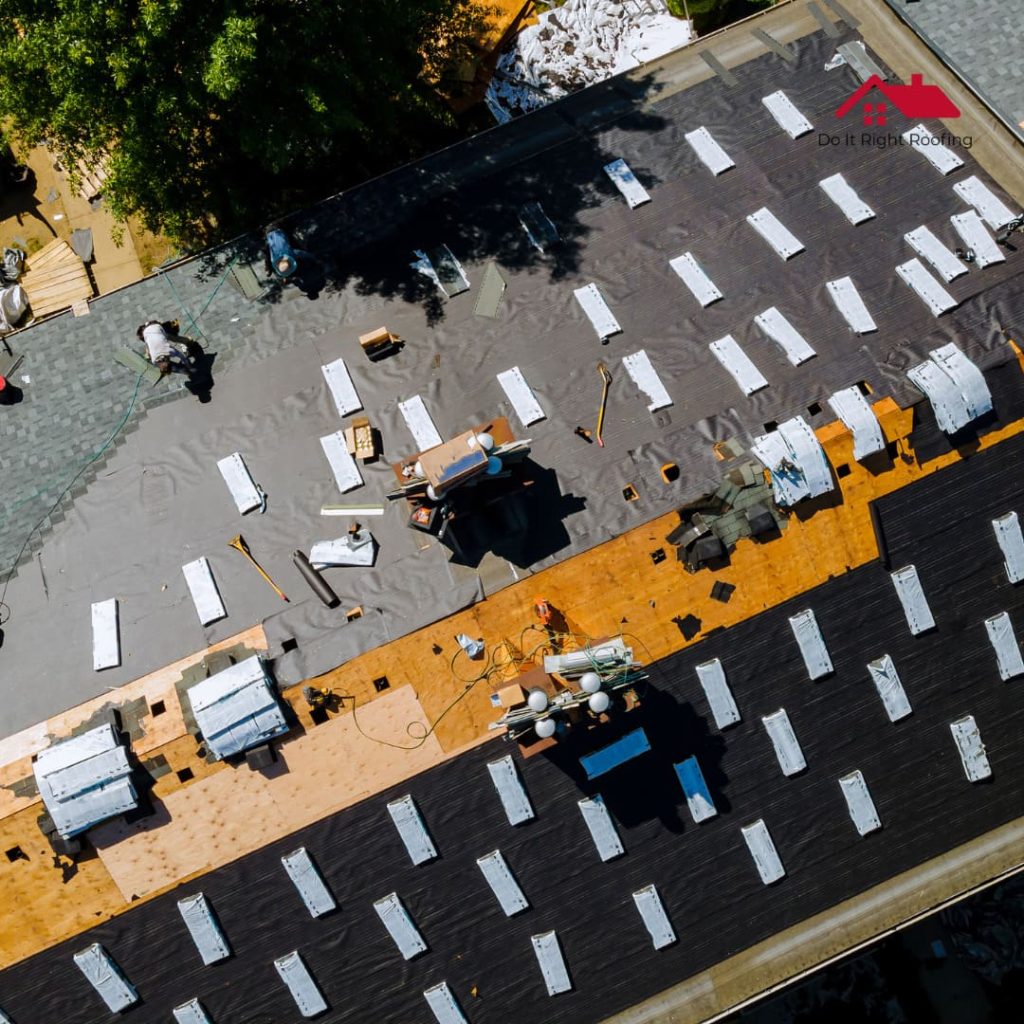If you’re considering a new roof, one of the first questions that comes to mind is, “How much will it cost?” The truth is, there’s no universal answer. Roofing costs can vary significantly based on several factors, and understanding these elements can help you budget realistically and make informed decisions.
Rather than vague estimates, this guide will break down the key factors that impact the cost of a roof replacement so you know exactly what goes into the pricing.
Roof Size & Complexity
The most straightforward cost factor is the size of your roof. Roofing is priced per square foot, so larger homes naturally cost more. But it’s not just about size—complexity matters too.
- Pitch & Slope: Steeper roofs require more labor and safety precautions.
- Multiple Levels & Valleys: More cuts and intricate designs increase material waste and installation time.
- Obstacles & Features: Skylights, chimneys, vents, and dormers require extra flashing and precise installation, adding to labor costs.
Example: A simple ranch-style home with a low slope will cost significantly less than a multi-story home with dormers, skylights, and a steep pitch.
Roofing Material Selection
Not all roofing materials cost the same. While asphalt shingles are the most affordable, premium materials like metal, slate, or tile come with a higher price tag.
Common Roofing Materials & Cost Estimates (per square foot installed)
✔️ Asphalt Shingles: $3.50 – $6.00 (Most affordable and widely used)
✔️ Metal Roofing: $7.00 – $14.00 (Longer lifespan, energy-efficient)
✔️ Tile or Slate: $10.00 – $25.00 (High-end, extremely durable, but heavy)
✔️ Wood Shakes: $6.00 – $12.00 (Natural aesthetic, requires maintenance)
✔️ Flat Roofing (TPO, PVC): $5.00 – $12.00 (Common for commercial and modern homes)
Example: If you’re replacing a 2,000 sq. ft. roof, a basic asphalt shingle roof could cost around $8,000-$12,000, while a high-end slate roof could be $30,000+.
Tear-Off vs. Roof Overlay
If your existing roof is in good shape and local building codes allow, you may overlay new shingles over the old ones—this saves on labor and disposal costs. However, if your roof has structural issues, a full tear-off and replacement is required.
✔️ Tear-Off: More labor-intensive, adds to disposal costs
✔️ Overlay: More affordable but not always the best long-term solution
Example: A tear-off can add $1,000-$3,000 to the project depending on the roof size and the number of layers being removed.
Underlayment & Additional Components
A roof isn’t just shingles or metal panels—it’s a complete system with multiple layers. The cost of these materials can significantly impact your final price:
✔️ Underlayment: Protects against water infiltration ($0.50 – $1.00 per sq. ft.)
✔️ Flashing: Seals roof penetrations like chimneys & vents ($300 – $1,500)
✔️ Ventilation: Ridge vents, soffit vents, or attic fans ($500 – $2,000)
✔️ Gutter System: If included, new gutters and downspouts add cost ($1,000 – $3,000)
Example: Upgrading to high-quality synthetic underlayment instead of felt paper can add $500-$1,000 to your roof cost but provides better longevity.
Labor & Contractor Expertise
Labor is one of the biggest factors in roof pricing. Hiring an experienced, licensed, and insured roofing contractor may cost more upfront, but it ensures proper installation, warranty compliance, and long-term reliability.
✔️ Licensed & Insured Contractors: Higher rates but better quality assurance
✔️ Roofing Crew Size: More workers = faster completion but higher labor costs
✔️ Emergency or Seasonal Demand: Roofing in peak season (spring/summer) can be more expensive
Example: Hiring a licensed roofing contractor may cost 10-20% more, but it ensures compliance with building codes and avoids costly mistakes.
Geographic Location & Permits
Where you live plays a significant role in roofing costs due to climate, local regulations, and material availability.
✔️ Regional Labor Costs: Urban areas have higher labor costs than rural areas.
✔️ Climate Considerations: Areas with heavy snowfall or high winds may require reinforced roofing materials.
✔️ Permits & Inspections: Required by most cities and can add $200-$1,000 depending on local regulations.
Example: Roofing costs in Tacoma, WA may differ from those in Phoenix, AZ, due to differences in material needs and labor rates.
Warranty & Long-Term Investment
A higher upfront investment can mean lower costs in the long run if you choose quality materials and a strong warranty.
✔️ Manufacturer Warranties: Covers defects in shingles (20-50 years)
✔️ Workmanship Warranties: Covers installation errors (5-25 years)
✔️ Extended Warranties: Some brands offer lifetime or transferable warranties for added protection
Example: A basic 25-year shingle might save you money today but need replacement sooner than a 50-year architectural shingle.
Final Thoughts: What Should You Expect to Pay?
Every roof is unique, and the final cost depends on all these factors combined. While general estimates can help, the only way to get an accurate price is through a detailed roof inspection and quote from a trusted contractor.
If you’re in Tacoma, WA, or surrounding areas, we at Do It Right Roofing can provide you with a clear, honest estimate based on your specific needs.
Call us today for a free consultation, and let’s get your roof done right!

